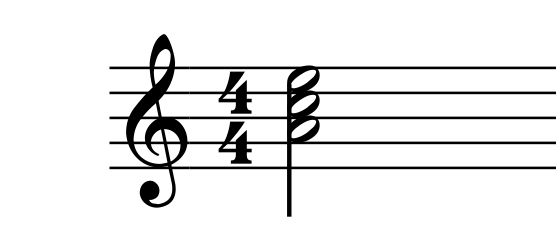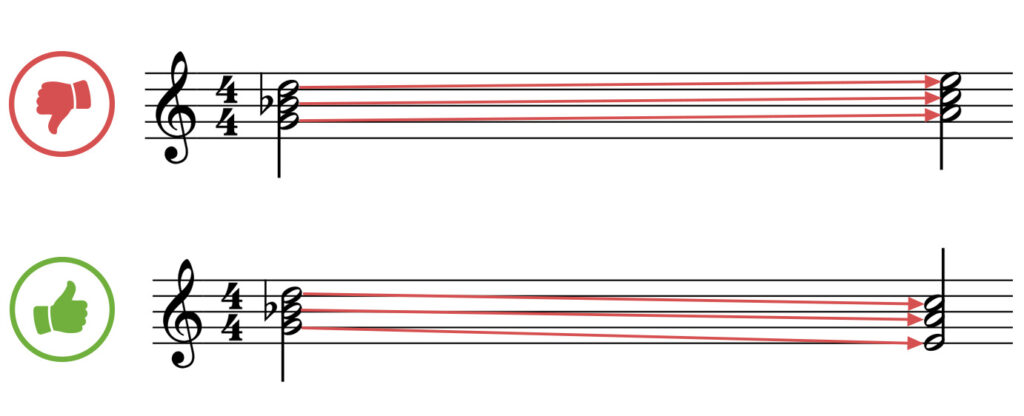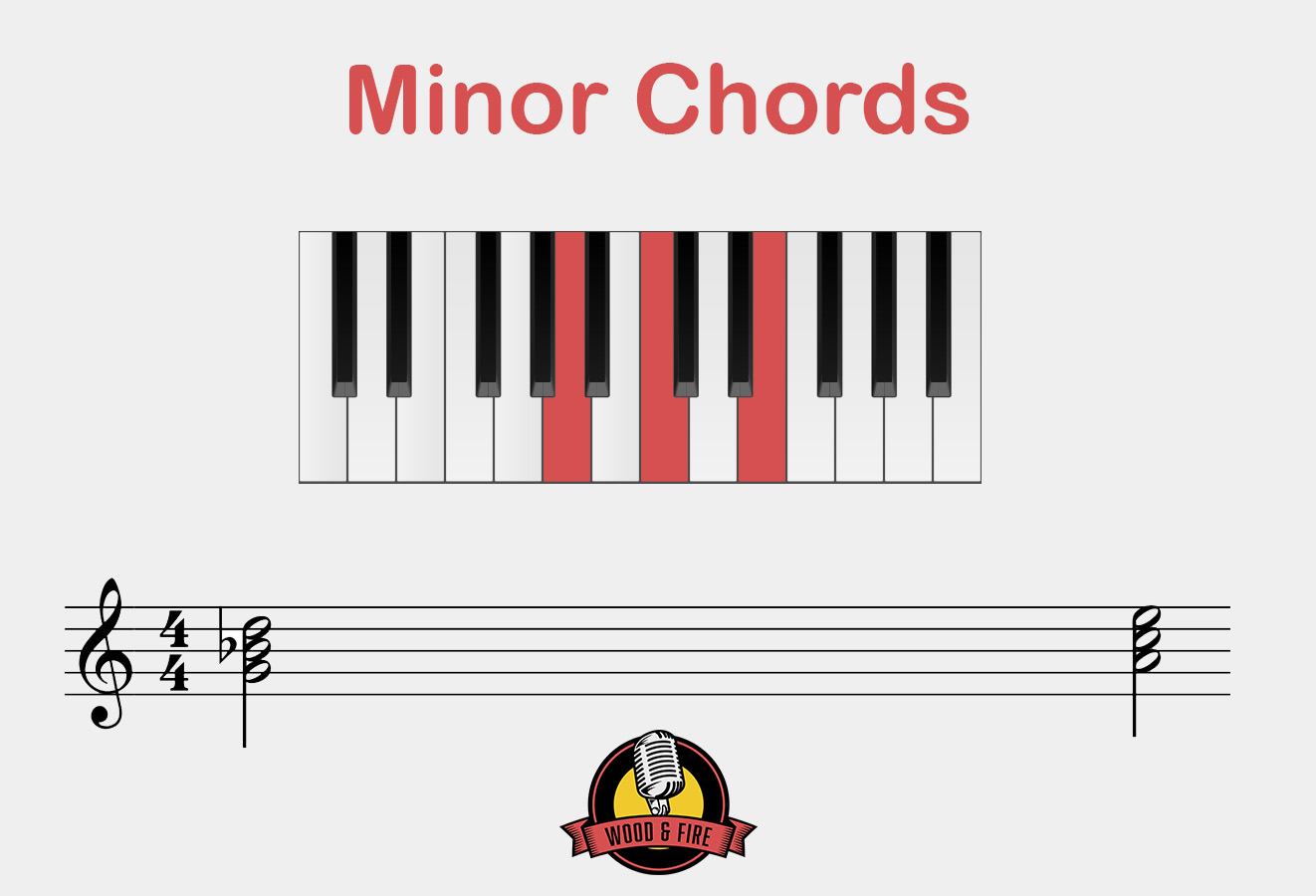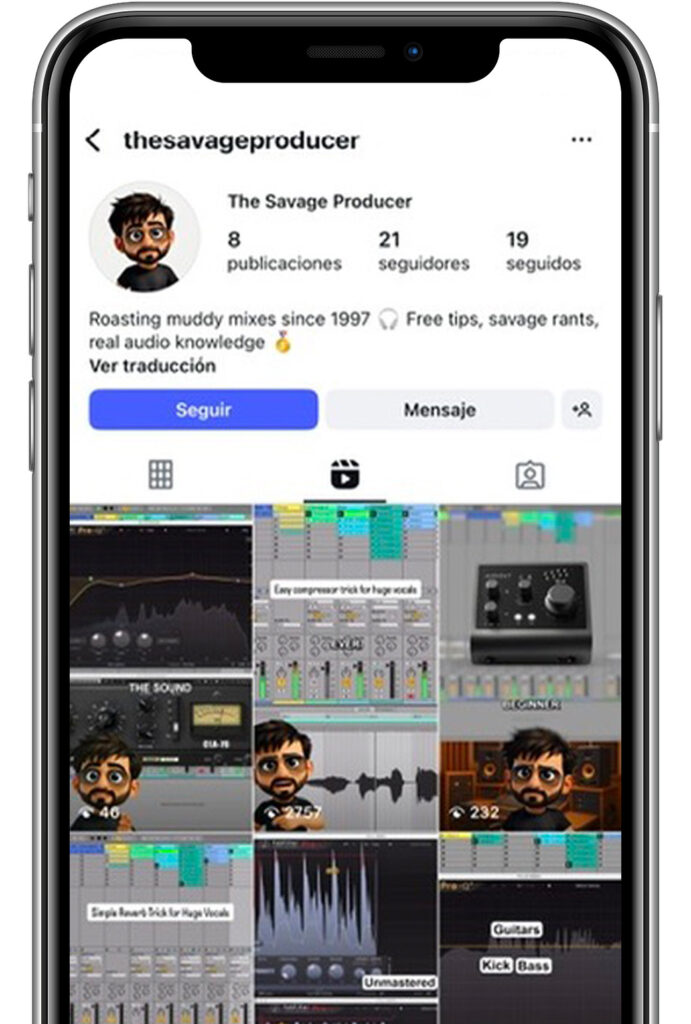What are minor chords?
The minor chord is one of the two simple chord types (major and minor) that consists of three notes. It is one of the first concepts introduced when learning chords. Unlike major chords, minor chords sound sad and melancholy - which is why they are so important in songwriting.
How do you build a minor chord?
To build a simple minor chord, you need 3 notes:
- The root: This is the starting point of your chord and gives it its name. For example, the root of a C minor chord is C.
- The minor third: This is the next note in your chord, three semitones (a minor third) above the root. In a C minor chord, this would be an E flat.
- The fifth: This is the last note in your chord, seven semitones (a perfect fifth) above the root. In a C minor chord, this would be a G.
As an example, let's take the A minor chord (parallel key to C major), since it contains no sharps or flats:

More complex minor chords
But there is more than the simple three-note minor chord - by adding a fourth note, you can create more complex minor chords and interesting harmonies:
Minor seventh chord: This chord consists of the root, the minor third, the fifth and the minor seventh. In a C minor 7 (Cm7) these would be the notes C, Eb, G and Bb. It has a darker sound than a simple minor chord and is often used in jazz and blues music.
Mollmaj7: This chord is made up of the root, the minor third, the fifth and the major seventh. In a C minor major 7th (CmMaj7), these would be the notes C, Eb, G, and B. It conveys a bittersweet, melancholy mood and is often used in jazz and pop music.
Minor6: This chord is made up of the root, the minor third, the fifth and the major sixth. In a C minor6 (Cm6) these would be the notes C, Eb, G and A. It has a soft, warm sound and is often used in jazz and bossa nova.
Molladd9: This chord consists of the root, the minor third, the fifth and the major ninth (i.e. the second one an octave higher). In a C minor add9 (Cmadd9) these would be the notes C, Eb, G and D. It has a rich, wide sound and is often used in pop music.
Inversions of minor chords
Inversions make chords within a cadence much more interesting because they vary the voicing of each step. For example: If I go from G minor to A minor by simply transposing each note up a whole tone, it sounds boring and uninteresting because each voice only goes up one step at a time.
But when I work with inversions, it sounds much more interesting because now each voice goes in a different direction and has a different interval.

For each triad chord there are 2 different inversions in addition to the basic position:
- Basic position: The fundamental is the lowest note. It is followed by the third and then the fifth.
- First reversal: Here the fifth is the lowest, above it the fundamental and finally the third.
- Second reversal: Here the third is at the bottom, followed by the fifth and finally the fundamental.
How do you use minor chords in compositions?
In major keys: as a predominant chord
In traditional Western music theory, the predominant is the chord that often precedes the dominant (V chord) and leads to the tonic (I chord) for resolution. Predominant chords help to build tension, which is then resolved by moving to the dominant and finally to the tonic.
In major keys, the predominant is usually the subdominant (IV) or the subdominant parallel (ii).
Let's take the key of C major as an example: The IV chord (subdominant) would be F major (F, A, C) and the ii chord (subdominant parallel) would be D minor (D, F, A). Both chords can act as a predominant leading to the dominant G major (G, B, D) and finally to the tonic C major (C, E, G).
When the ii chord is used as the predominant, it often has a subtly different emotional effect than when the iv chord is used. While the IV chord has a brighter, more open sound, the ii chord can produce a slightly more melancholic, intimate sound.
It is also common to use the ii chord together with the V chord in an ii-V-I progression, which is one of the most common chord progressions in jazz music. In this progression, the ii chord serves as a predominant leading to the dominant and then resolving to the tonic.
For minor keys: as tonic, dominant and subdominant
The circle of fifths illustrates this clearly: in minor keys, the tonic, dominant and subdominant are all minor chords. So you can build entire cadences using only minor chords if you want your song to have a sad or melancholic mood.
The song "Roots, Rock, Reggae" by Bob Marley is a good example of this: it uses only minor chords in the chord progression i-iv-i-v.

By loading the video, you accept YouTube's privacy policy.
Learn more
Conclusion
Minor chords open up many possibilities for expressing emotion, creating musical arcs of tension, and refining the sonic image of a composition. Often associated with sad or mournful moods, they can also convey depth, complexity, and emotional nuance.
After all, the creative use of chords and harmonies is a central element in creating music that is memorable and moving to the listener. Learning and understanding minor chords is therefore essential for any musician.
Keep reading: Using diminished chords to bring more tension into your compositions
















